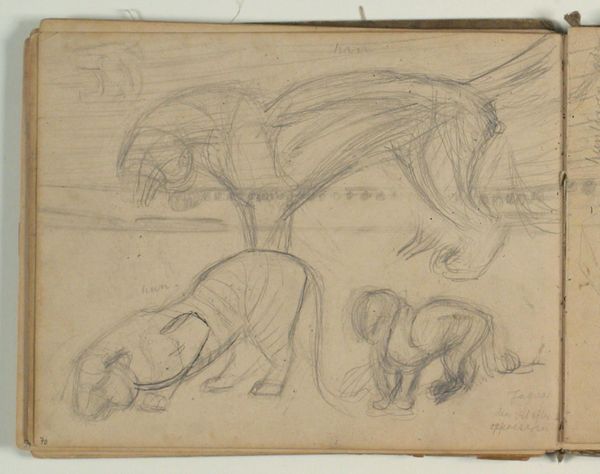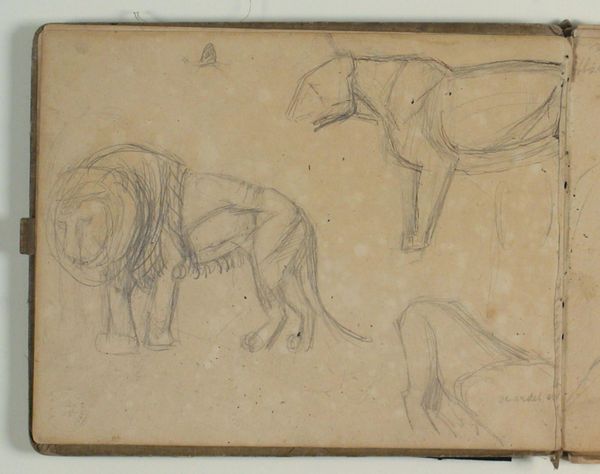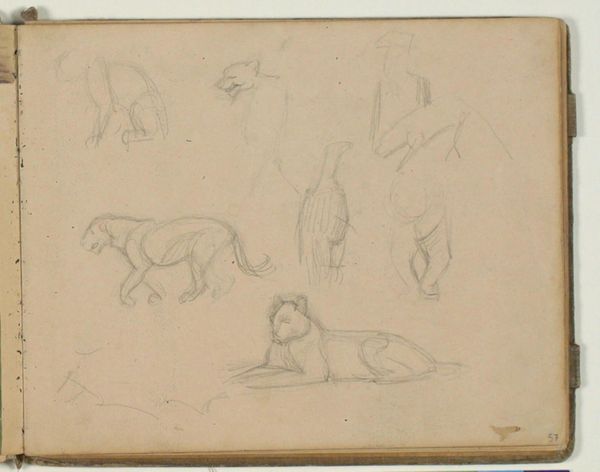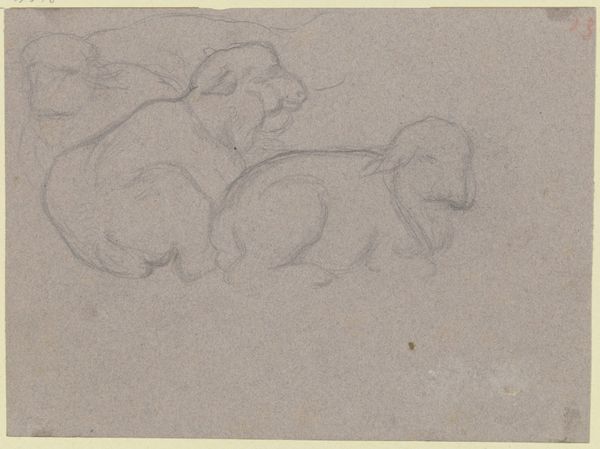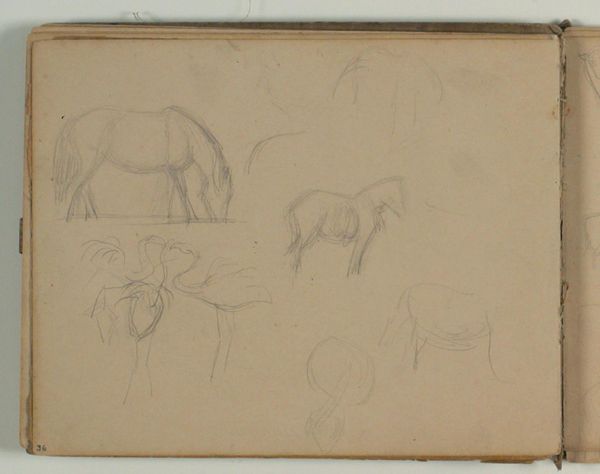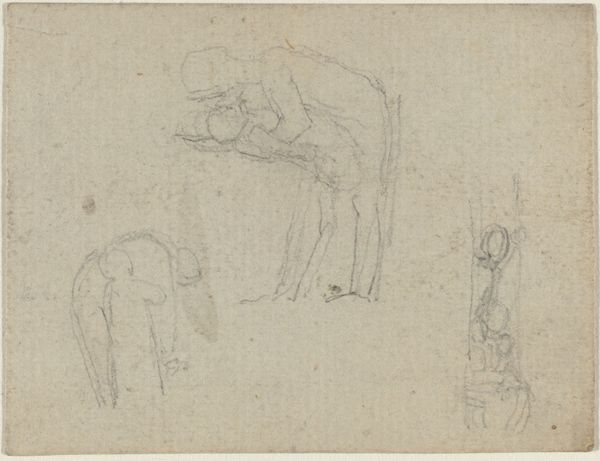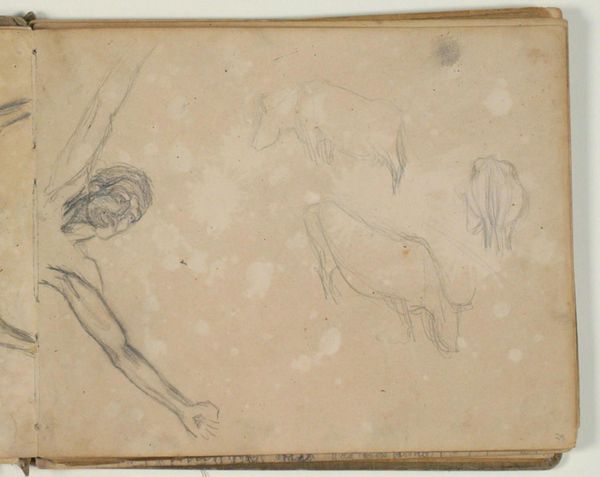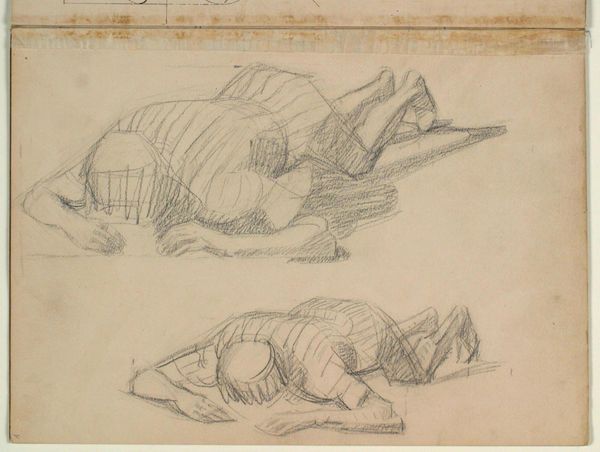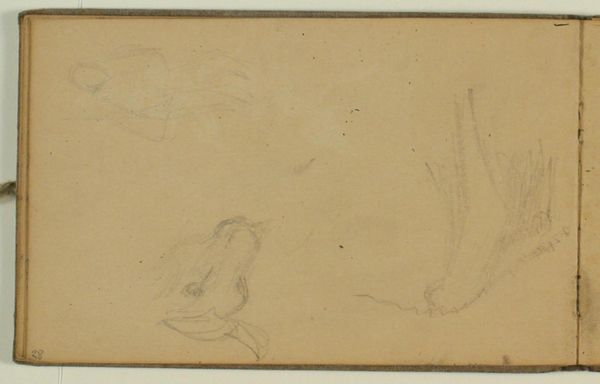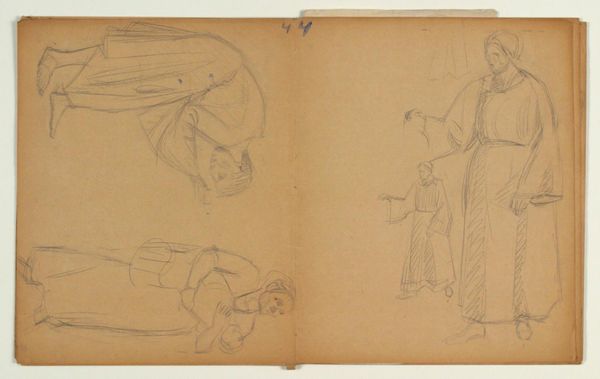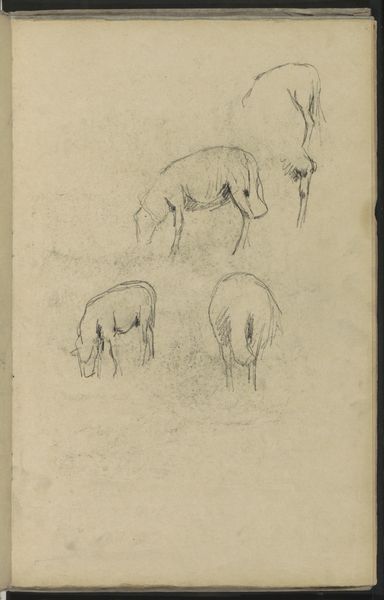
drawing, paper, pencil
#
drawing
#
animal
#
paper
#
pencil
#
watercolor
#
realism
Dimensions: 204 mm (height) x 260 mm (width) x 13 mm (depth) (monteringsmaal), 204 mm (height) x 260 mm (width) (billedmaal)
Curator: Let's take a look at "Dyreskitser," or "Animal Sketches," by Niels Larsen Stevns, likely created between 1900 and 1905. Editor: My immediate impression is one of intimacy, Curator. The light pencil strokes against the aged paper evoke a quiet moment, almost a secret glimpse into the artist's private study. Curator: These were a part of studies he would perform for larger painting commissions or for lithographs in books of popular myths and legends. The early 20th Century, Denmark was finding itself in this period. He needed preliminary studies of animals. Note how each one has its weight on its belly resting. This reflects how animals had weight in larger national cultural concepts as well. Editor: Indeed. Stevns really captures their corporeal nature here. Notice how the artist uses the pencil to create shading and mass. The formal elements work beautifully in tandem. The curve of its spine... It is at ease. Do you agree that this realism also lends an emotive power? Curator: Precisely, because the artwork served in the political purposes to the State and in book illustrations, artists had to train to depict things, especially animals, realistically to make propaganda most potent. This way it was accessible to the people as he also was working through realism. Editor: To step back for a moment, Curator, even as "sketches", this captures the truth and essence of the animal’s weight, as well. Curator: Certainly, one of Stevns' accomplishments with this particular study, in relation to other studies, is his integration of nature studies with social, and political aims through visual imagery. Editor: Yes, from a formalist standpoint, his mastery in portraying these is evident and quite fascinating! The lines speak for themselves. Curator: His sketches served a purpose and were integral to state efforts and nation building. This art exists because the state requires it. Editor: Beautiful. I will never view “Dyreskitser” in quite the same way after hearing your contextual insights, Curator! Curator: And likewise. Your perspective has enabled me to see these from the view point of artistic mastery instead of social function alone.
Comments
No comments
Be the first to comment and join the conversation on the ultimate creative platform.
